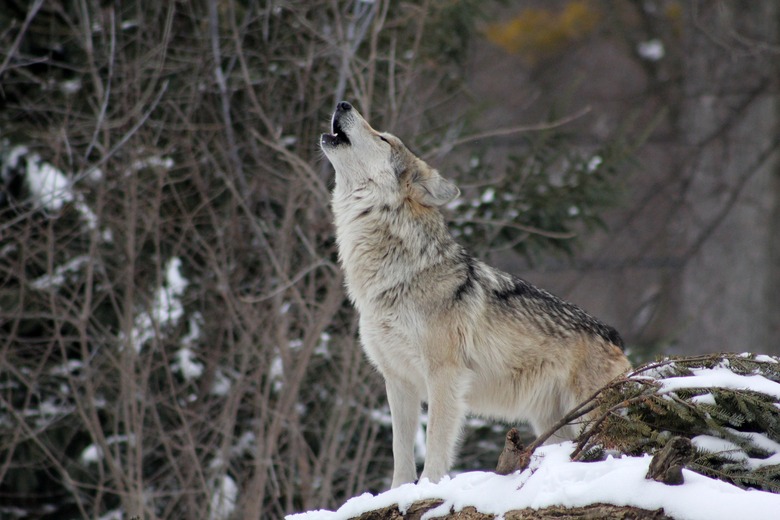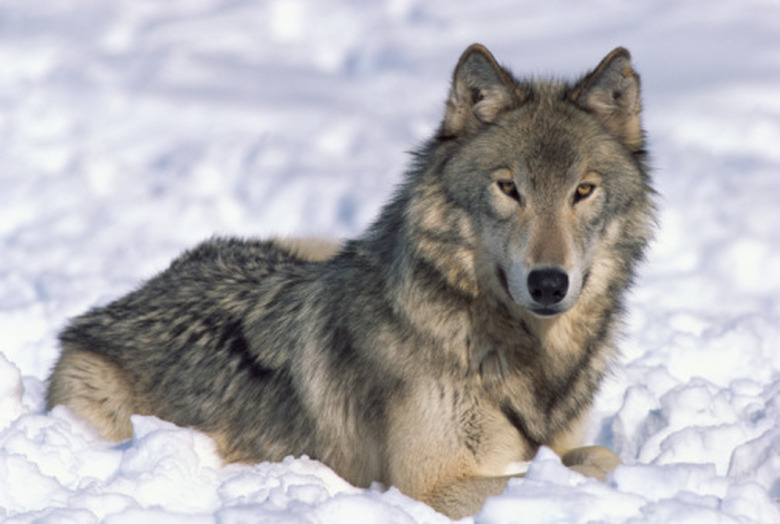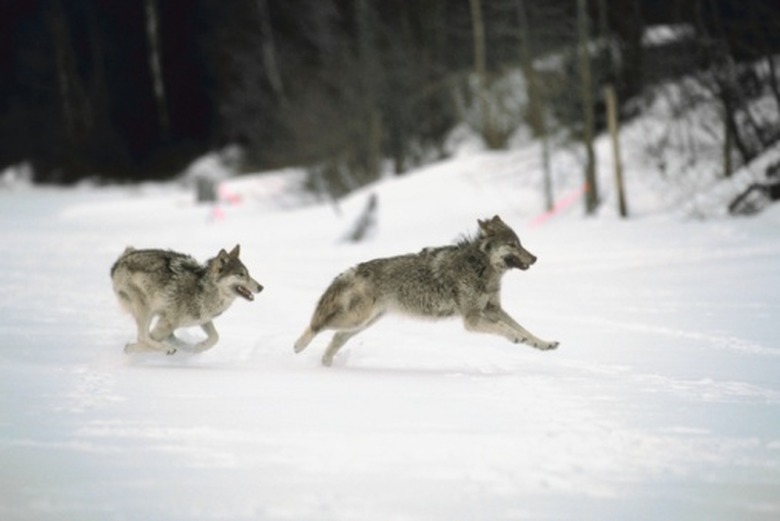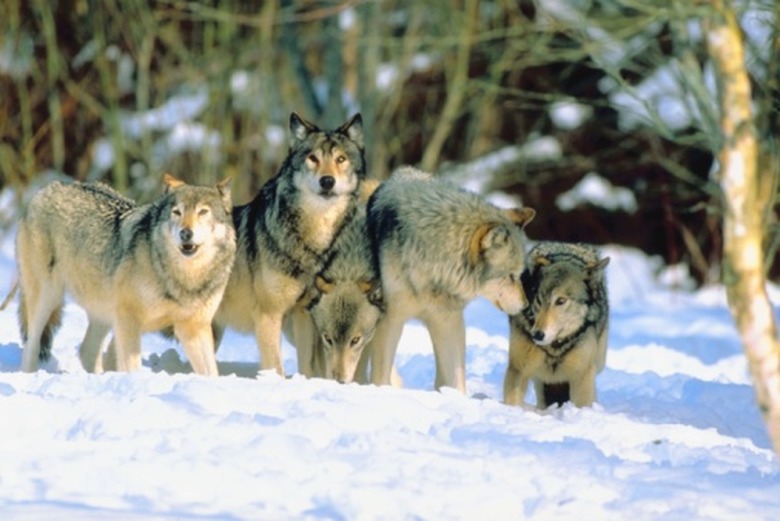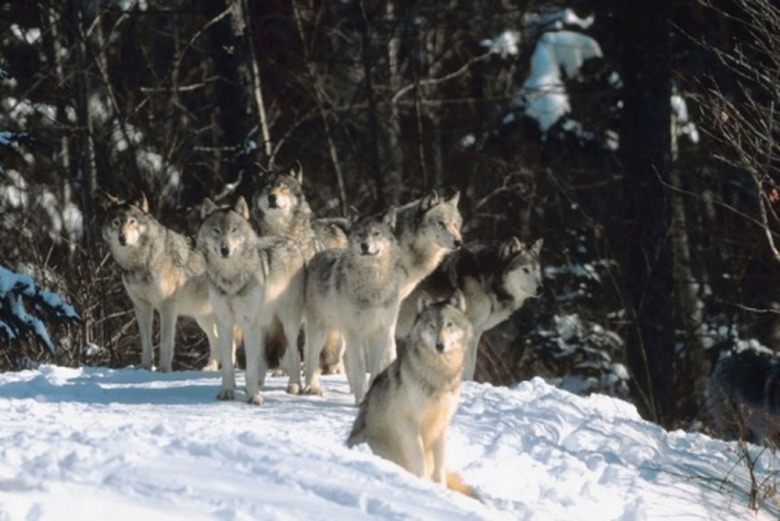Timber Wolf Adaptations
The gray wolf is commonly known as the timber wolf in the United States and is the largest of the dog family. It has a gray, black and white coat, with tan markings on the legs and muzzle. The timber wolf can weigh up to 120 lbs. and can reach up to three feet in height. The timber wolf lives in packs in the northern regions of Asia, Europe and North America and is a protected species.
Fur Density
Fur Density
The coat of the Timber Wolf is incredibly thick. A thick coat is necessary to protect the wolf from arctic winds and winters as cold as -20 degrees Fahrenheit. The fur of the timber wolf is woolly at its base with long guard hairs that protect against moisture. The woolly undercoat acts as an additional moisture barrier, as well as traps body heat against the wolf's skin.
Specialty Paws
Specialty Paws
The paws of the timber wolf are especially adapted to run swiftly on snow. The paws spread to protect against sinking in snow. Each toe is protected against frost bite with additional fur between each toe. Each paw is very large and fleshy, with long claws for traction at speeds of up to 45 miles per hour.
Keen Senses
Keen Senses
Like dogs, the gray wolf has keener senses of hearing and smelling than humans. Their hearing ability is 20 times sharper than a human's. Likewise, the wolf has a sense of smell 100 times stronger than a human's. These keen senses protect the wolf from its predators long before it sees them and enables the wolf to find prey even before it is in sight.
Powerful Hunters
Powerful Hunters
Timber wolves hunt elk, moose and bison in packs. To kill and eat such large prey with only their teeth to aid them, the timber wolf needs strong jaws. The jaw of the timber wolf has the strength of 500 pounds of pressure per square inch. Not only is the wolf able to kill the beast, it is able to break open its heavy bones for the nutritious marrow inside.
Cite This Article
MLA
Jennifer, Kristin. "Timber Wolf Adaptations" sciencing.com, https://www.sciencing.com/timber-wolf-adaptations-8685120/. 22 November 2019.
APA
Jennifer, Kristin. (2019, November 22). Timber Wolf Adaptations. sciencing.com. Retrieved from https://www.sciencing.com/timber-wolf-adaptations-8685120/
Chicago
Jennifer, Kristin. Timber Wolf Adaptations last modified March 24, 2022. https://www.sciencing.com/timber-wolf-adaptations-8685120/
